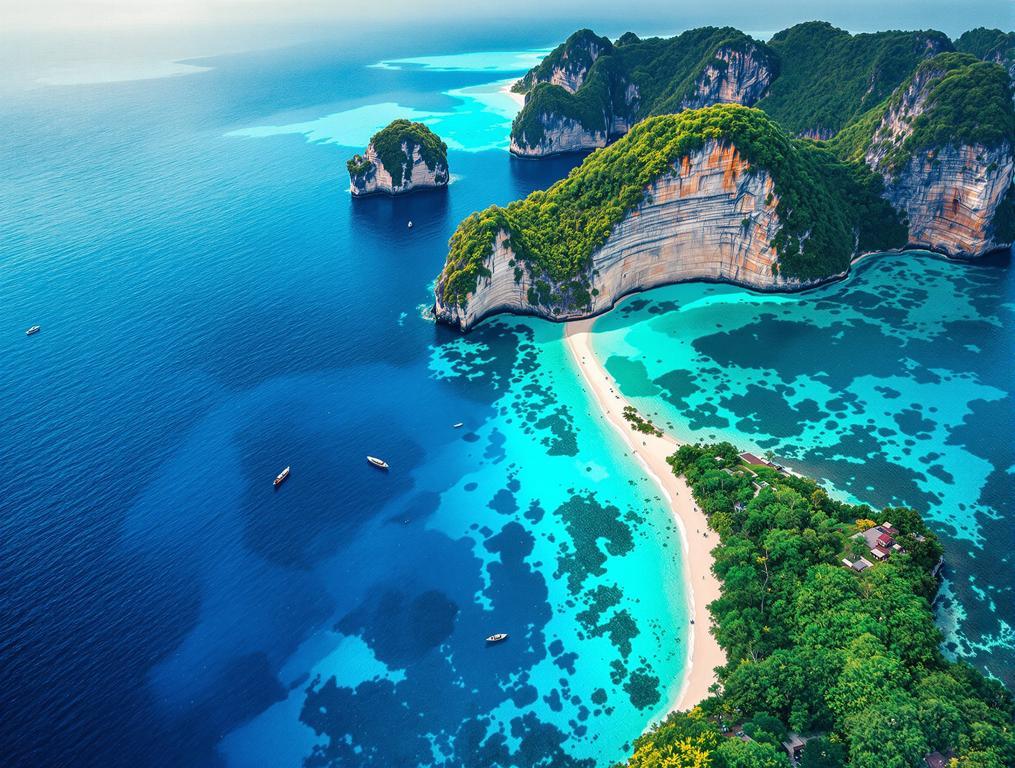The speedboat slices through crystalline waters, leaving Bali’s crowded shores behind. Just 30 minutes from Sanur, I’m stepping onto a weathered wooden jetty where Nusa Lembongan reveals itself—an 8 km² limestone island where 5,000 residents guard one of Earth’s most significant biological boundaries. My feet touch land exactly where Asian tiger territory ends and Australian marsupial domain begins. Welcome to the western edge of the Wallace Line, a mysterious ecological divide that has puzzled scientists since 1859.
5,000 Islanders Guard Earth’s Most Dramatic Biological Dividing Line
The morning sun illuminates a landscape that doesn’t immediately reveal its scientific significance. Yet this tiny island marks the frontier of the Wallace Line—a boundary so profound that Alfred Russel Wallace, Darwin’s contemporary, used it to help formulate evolutionary theory.
“This place sits at a crossroads where two biological worlds collide,” explains a local dive instructor as we prep for a morning snorkel. “Look west, and you’re in Asia. Look east toward Lombok, and you’re suddenly in Australia—biologically speaking.”
The evidence surrounds us. In waters west of Nusa Lembongan, you’ll find Asian marine species that abruptly disappear just kilometers east. This invisible line marks where deep ocean trenches formed 50 million years ago, creating an impassable barrier for land animals and many marine species.
Local seaweed farmers have unknowingly worked alongside this scientific wonder for generations. Along the southwest coast, hundreds of seaweed plots stretch across shallow waters, tended by families who navigate the tides with practiced precision. Here, traditional knowledge and evolutionary science exist in perfect harmony.
“We notice different fish on different sides of our island. Our grandparents taught us which waters bring which creatures. Now scientists come and tell us it’s something called the Wallace Line. We just smile—we’ve always known.”
Where Asian Tigers End and Australian Marsupials Begin
Unlike Bali’s Melasti Beach with its 52,000 April visitors, Nusa Lembongan offers breathing room. Even in peak June season, Crystal Bay hosts fewer than 200 snorkelers daily—a stark contrast to mainland Bali’s thousands.
What makes this island extraordinary isn’t just its tranquility but its position as a living laboratory. The limestone cliffs near Devil’s Tear showcase dramatic geological formations where waves crash with thunderous force—physical evidence of the deep trenches that created this biological divide.
Walking the island’s single road, I pass women carefully harvesting cottonii seaweed that will eventually supply global cosmetics markets. Their work connects Nusa Lembongan to a sustainable economic model similar to innovative communities worldwide. Nearly 80% of local families participate in seaweed farming, creating a micro-economy that predates tourism.
The mangrove forests on the island’s eastern shore serve as nature’s nurseries—where juvenile fish develop before navigating either side of the Wallace Line. A 30-minute kayak tour through these channels reveals the biological nursery in action, with roots teeming with life.
From Darwin’s Contemporary to Today’s Eco-Tourism
Wallace’s 1859 publication documenting this biological boundary revolutionized our understanding of species distribution—much like other world-changing discoveries that transformed human knowledge.
Today, Nusa Lembongan offers a rare opportunity to physically stand at this scientific frontier. The June-August dry season provides optimal conditions, with crystalline waters revealing vibrant coral formations and manta ray feeding grounds just offshore.
The scientific significance hasn’t been lost on local tourism operators. Similar to East Java’s research destinations, Nusa Lembongan now features guided “Wallace Line Tours” where marine biologists explain the evolutionary significance while visitors snorkel through the boundary waters.
June-August 2025: The Perfect Window to Witness Two Worlds Collide
Reaching Nusa Lembongan requires a 30-minute speedboat from Bali’s Sanur Beach, with tickets costing 300,000 IDR round-trip. Book directly at Sanur Harbor for a 40% discount compared to hotel rates.
For optimal snorkeling conditions, visit Manta Bay before 10 AM to avoid crowds and enjoy clearer visibility. The island’s accommodation ranges from $30 homestays to $200 boutique villas, most concentrated around Jungut Batu.
Unlike densely populated Pacific islands, Nusa Lembongan maintains a peaceful atmosphere with bikes and foot traffic dominating narrow roads. The newly implemented $10 eco-tax funds conservation efforts along the Wallace Line reef systems.
As sunset bathes the limestone cliffs in golden light, I reflect on how this small island maintains its quiet dignity despite its scientific importance. Standing at a boundary where evolutionary history was written, watching seaweed farmers work waters that hide profound biological secrets, I understand why Wallace was so captivated. Some boundaries aren’t meant to be crossed—they’re meant to be understood.
